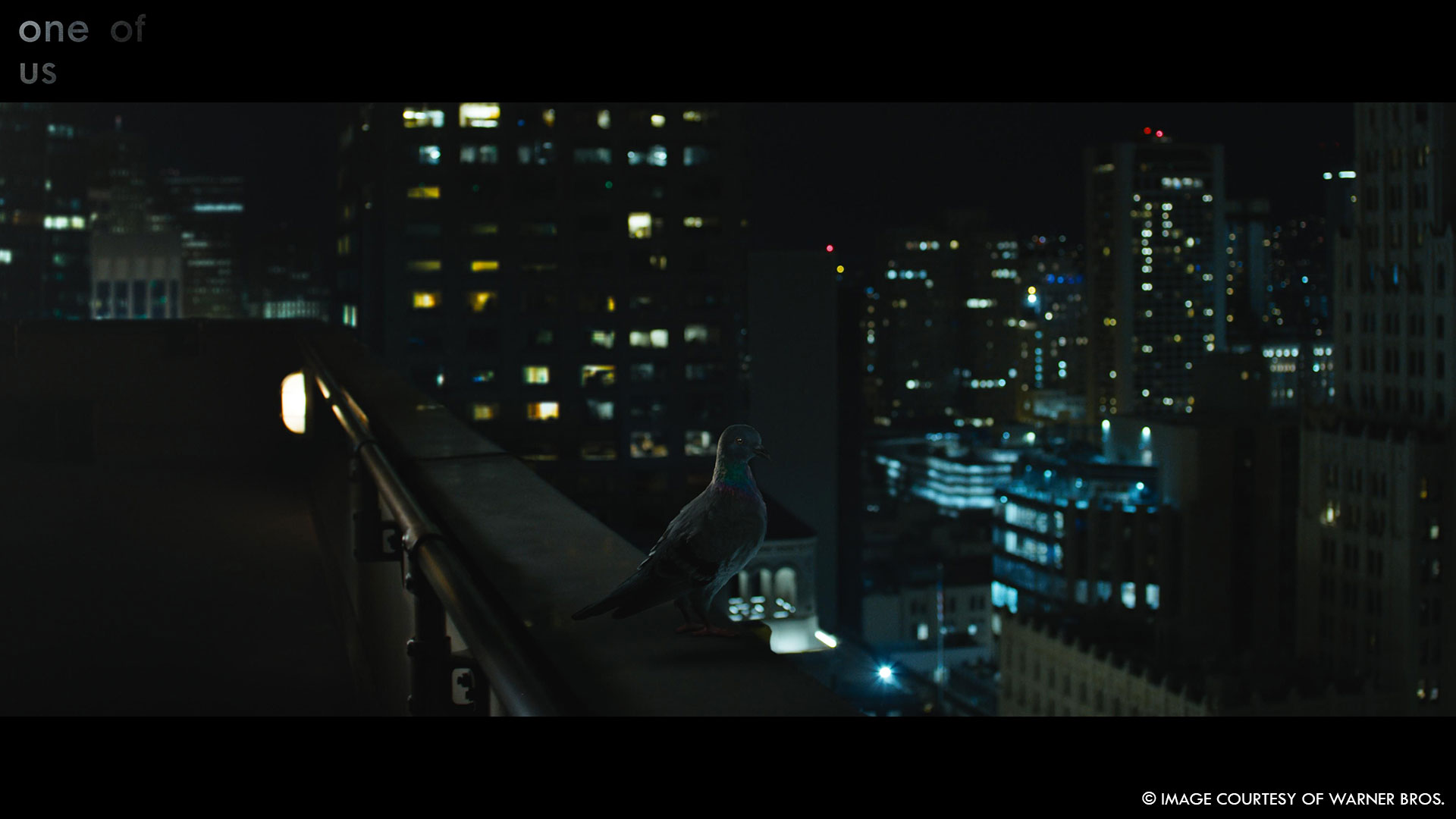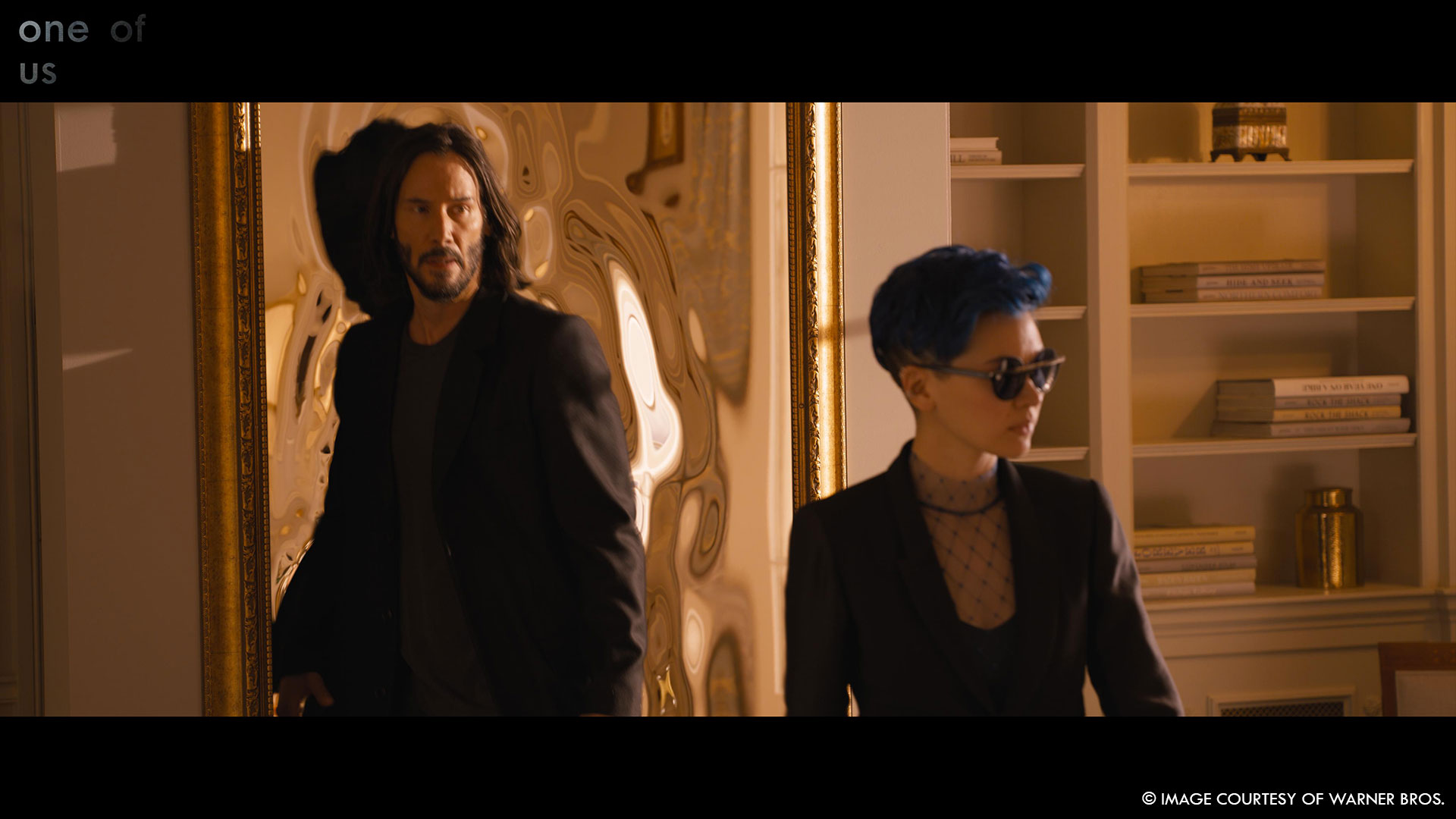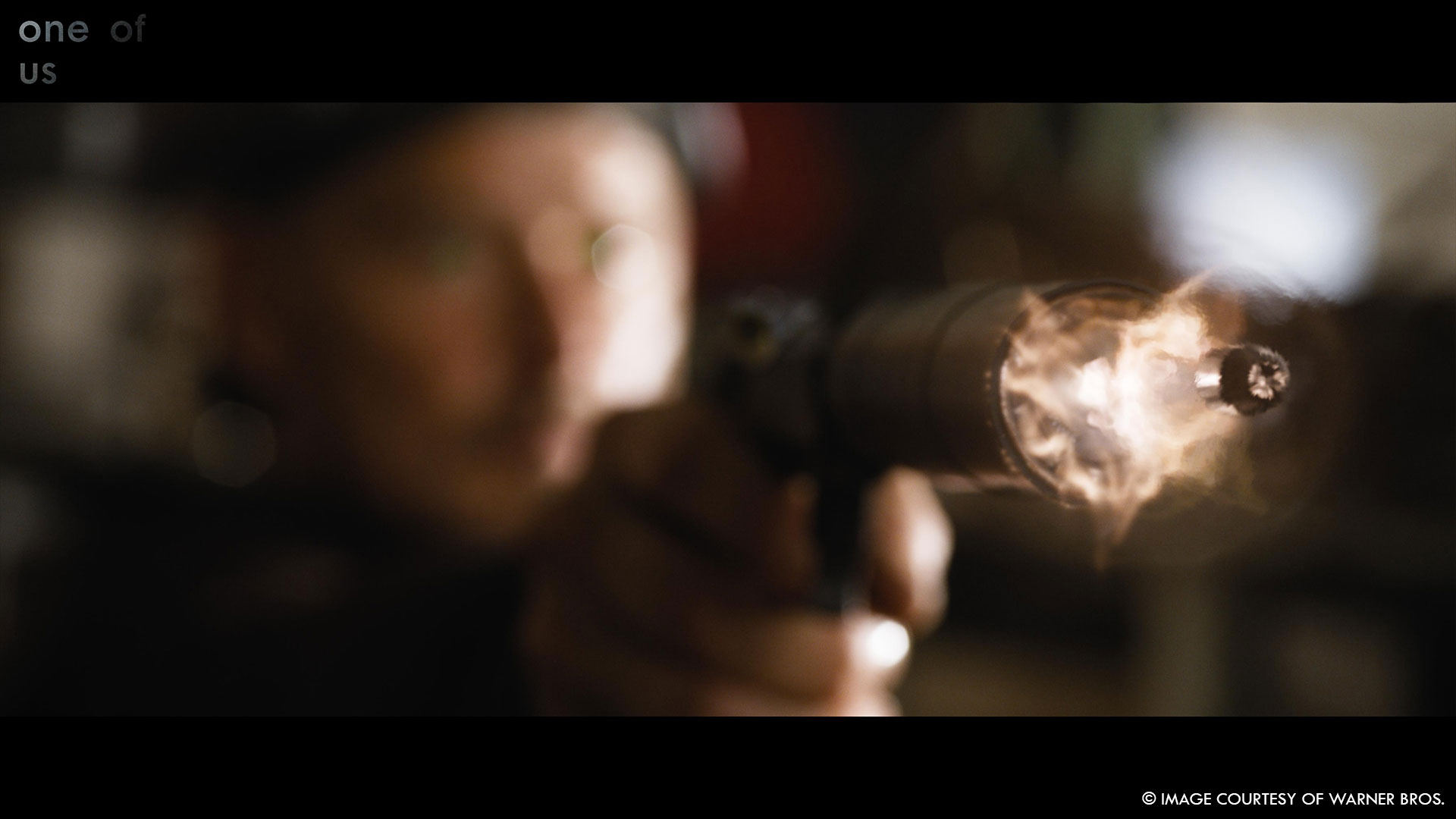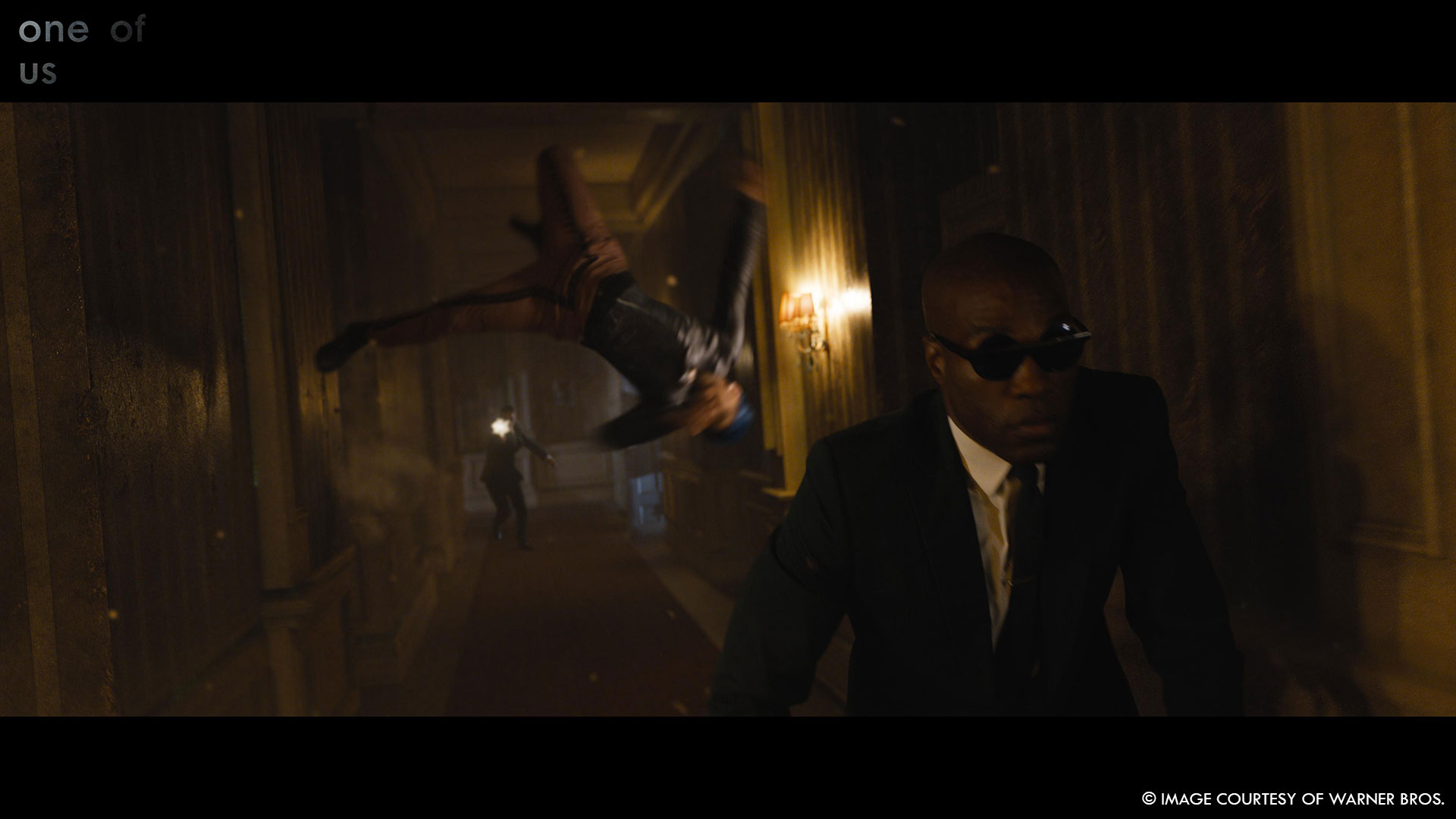Tyson Donnelly started his career in visual effects over 10 years ago. Before joining One of Us in 2016, he worked at Fuel VFX and Animal Logic. He has worked on numerous films such as The Avengers, Iron Man 3, Star Wars: The Last Jedi and Aladdin.
What is your background?
I started my career as a compositor in Sydney, and moved to London and joined One of Us in 2016. It was with One of Us that I made the switch into supervision and had the opportunity to supervise a number of different projects from Netflix TV series, to Disney+ films.
How did you and One of Us get involved on this show?
The three founders of One of Us, Tom Debenham, Dominic Parker and Rachael Penfold have a long history working with the Wachowskis and overall VFX Supervisor Dan Glass. They had been involved since early conversations and Tom was the additional VFX supervisor on the production side. One of Us as a company is suited to solving more abstract creative briefs, so we were a good fit for the type of sequences we were awarded.
What was your feeling to be part of such an iconic universe?
The Matrix is such a defining movie in cinematic history, I think in particular for those in the VFX industry. It has been a reference point for so many films that came after it. Personally I always felt connected to them as it was one of the first major productions of that era to be shot in Sydney with so many recognisable landmarks so I enjoyed feeling connected to the film in that way.
How was this new collaboration with Director Lana Wachowski and Production VFX Supervisor Dan Glass?
One of Us was involved almost a year before VFX work began, to help test various sequences and work out creative ideas. Covid resulted in various delays and challenges, so most of our dialogue was with Dan Glass in the form of at least weekly cineSyncs. He was always generous with his time to elaborate on Lana’s wishes for a particular sequence.
What were their expectations and approach about the visual effects?
Lana’s new approach to filming was very much in the moment, picking up from her experiences on Sense8. This resulted in a very open minded approach to the VFX, so there were a lot of tests and idea exploration well into production before settling down on a concept. This allowed the VFX to serve the story, a lot more than something set in stone months before shooting.

How did you organize the work with your VFX Producer?
The challenge was the quick turnaround. There were many test screenings so we always had an eye on global updates across all our shots, while pushing forward isolated look dev. As our work was always about the feeling across a sequence, we were flexible in the way we split the work across multiple artists to allow us to be quite reactive.
How was split the work between the One of Us offices?
The work was all done out of the London office, while working remotely at home, except for occasional trips into the theater to check the work projected at 4K.
What are the sequences made by One of Us?
The warehouse scene with the Analyst (Neil Patrick Harris), Agent Smith’s mouth closing over, Walking through the mirror effect, Morpheus in the bathroom, both touching the mirror with his finger, and the bathroom with Neo reaching through the mirror. We also worked on sections of the chase scene with Bugs and Morpheus at the start of the film
Can you elaborate about the walking-through-the-mirror effect as well as the bullet trail effect?
The mirror effect was a new form of transportation for these films, very much referencing the original film, and how Neo exited the Matrix. The mirrors needed to strike a balance of not being too viscous or too watery. Once we established the technically correct method of reflecting the environment, we dialed down some of the distortion to create a less busy image.
Similarly for the Bullet trail, there were references to the original film but we had never seen it for extended periods of time. As our sequence was a time freeze, we looked at interesting ways to have it on screen, referencing the sequence’s original underwater plan. The Bullet trail needed to be visible and feel integrated to the environment, without being too physical that it looked like glass.

Did the Director want to do some specific changes to these iconic effects?
It was less about specific changes, and more about applying these iconic effects in a new context, as always in an attempt to serve the story. So most of the changes we made were to help them function in the new environment.
How did you enhance these iconic effects from the previous movies?
Not as much about enhancing as it was recontextualising the effects. The original effects stand up so well today, so it was about taking inspiration from them and focusing it into the new storytelling context.
What was your approach about the warehouse sequence?
The toughest aspect of the warehouse sequence was not one particular effect or shot, but how the sequence felt as an edit. It was an important story point for Lana, so a big part of our work was rolling out changes or mocking up the whole sequence so it could be viewed editorially and feedback given.
How was this sequence filmed?
The majority of shots were filmed with two cameras set up in a stereo rig, Cam ‘A’ set to 120fps 180 degree shutter. Cam ‘B’ set to 8fps 360 degree shutter. The ‘A’ camera was used for Neo/Trinity and the background. While the ‘B’ camera was used for the analyst look and the sparks.
Can you elaborate about the creation and animation of this slow-motion sequence?
The initial challenge was assembling the two cameras together. While editorial does a great job of mocking up the intention, once we begin to remove one character from a slow motion plate and insert a real time character (the analyst) there are a number of framing / tracking considerations. A large portion were steady cam so almost every shot had some form of reconstruction. For the latter part of the sequence the rig Neo was on was not selling the idea of him running in motion so that involved us animating a CG Neo in a correct running position then finding elements of plates we could use to recreate that. We then added a CG coat and hair to sell the sense of motion.

What kind of references and influences did you receive for this effect?
A major reference was photography by Christy Lee Rogers, who does underwater photos with an ethereal feel. The use of cloth and sense of movement in that photography was an important reference point for Lana. Supplementary to this we had the previous films to look back on as well as some more modern super slow mo references.
How does the slow-motion aspect affect your work?
It was a challenge as there was no hard and fast rule, it was left to us to creatively define what felt like the right amount of slow motion in an editorial context, so while Neo was shot 120fps, we were often further slowing down his performance to keep the time scale consistent. On a more practical side it would result in 5 times the frames we would need to roto to convert the Analyst performance into the desired 8fps look.
What was the most challenging aspect of this sequence?
Staying in step with editorial – it was a tandem effort between us both to find options to execute certain shots in the best way with the plates that were shot. A large part was dissecting what was a directorial, or editorial choice and what was a mistake due to a temp split screen. In large VFX shows, you always match the editorial ref 1:1, but a lot of our job was unpacking the intention behind the shot and presenting what we thought would work best.
Which shot or sequence was the most challenging?
Trinity dissolving was a tough shot, it was one of the first we started and last we finished. We needed to explore multiple methods of how that dissolve would function, while also revealing the analyst in the right way. Whenever you are digitally altering a hero actor’s face full screen, it will be a challenge.

Is there something specific that gives you some really short nights?
Nothing specific, it was more the overall drive to ensure we deliver work that was worthy of the Matrix legacy.
What is your favorite shot or sequence?
Personally I enjoy the mirror sequence in the hotel room, they have a great tactile feeling and were a lot of fun to work on. Our CG supervisor Ola Hamletsen and FX artist Lucy Devlin did a great job bringing those to life.
What is your best memory on this show?
Being part of an iconic series, as I was ending my time in London, it was a perfect way to see out my experience working overseas.
How long have you worked on this show?
About 10 months.
What’s the VFX shots count?
213.
What was the size of your team?
About 100.
What is your next project?
Since completing The Matrix: Resurrections I have relocated home to Sydney working for ILM, however OOU have a number of exciting upcoming projects including some very ambitious creature work on a Netflix show, and a first foray into the Marvel universe.
A big thanks for your time.
© Vincent Frei – The Art of VFX – 2022






